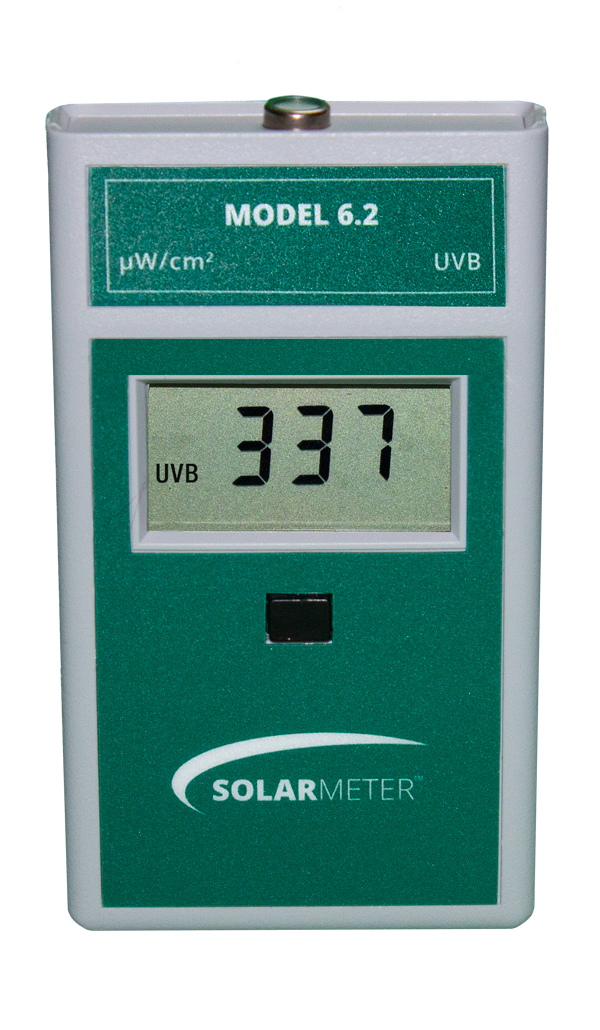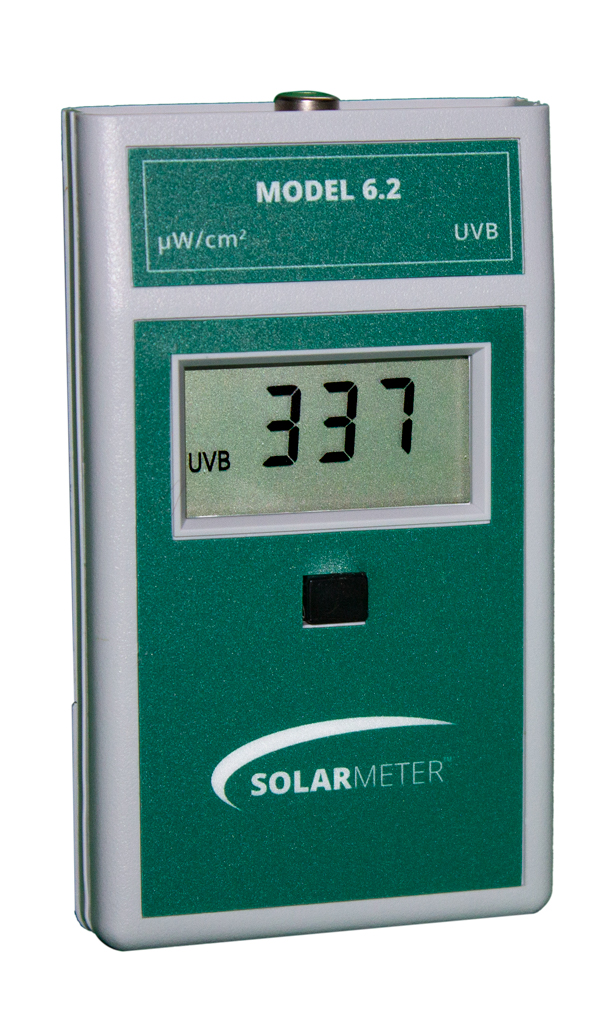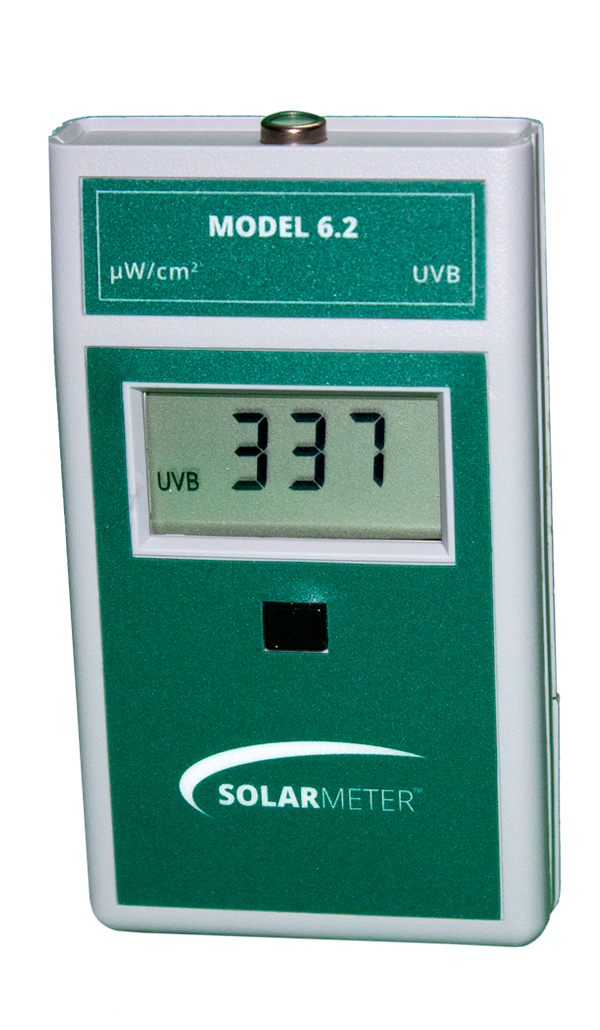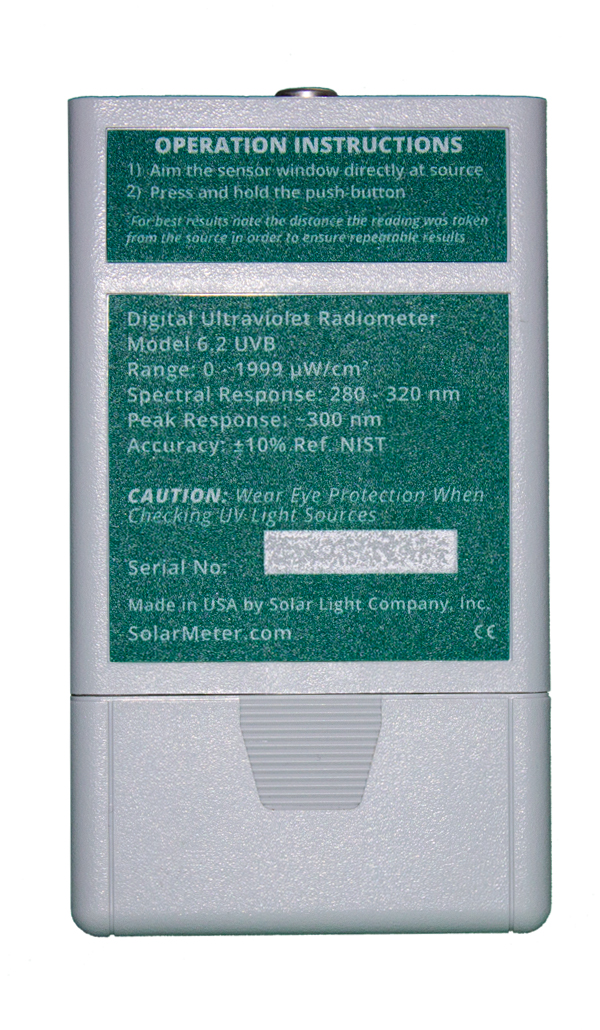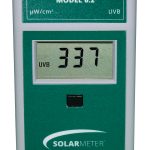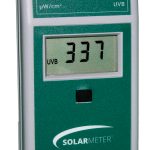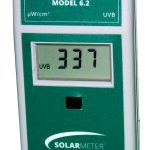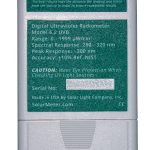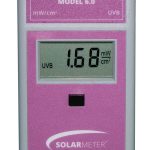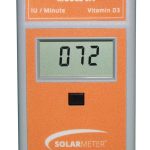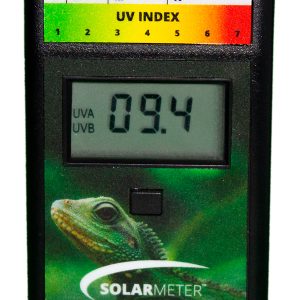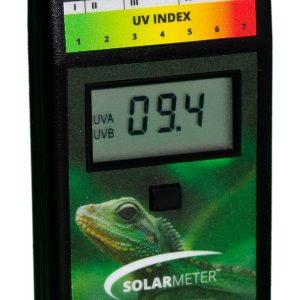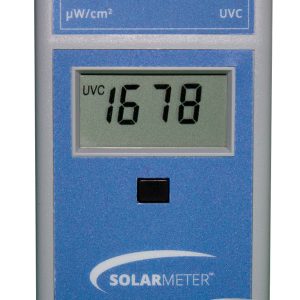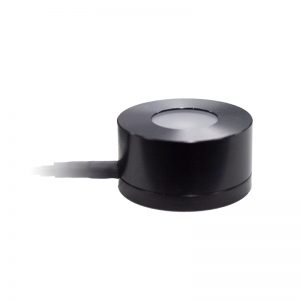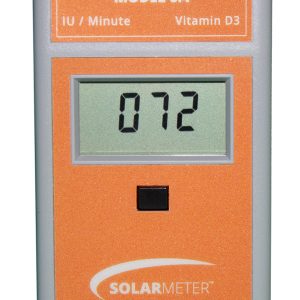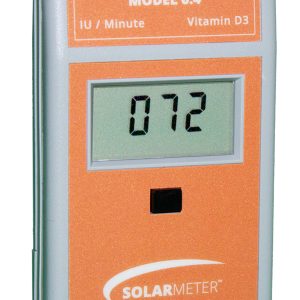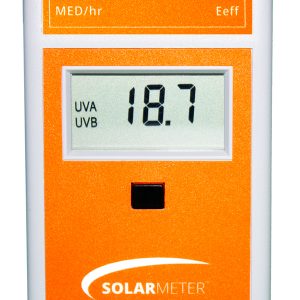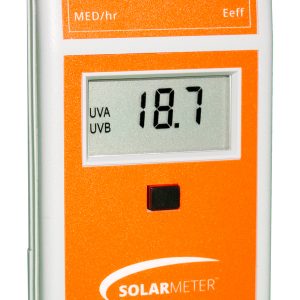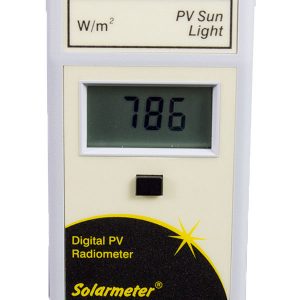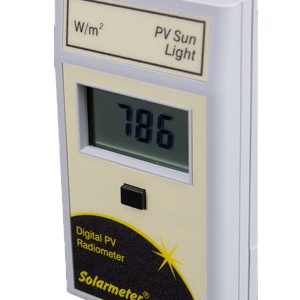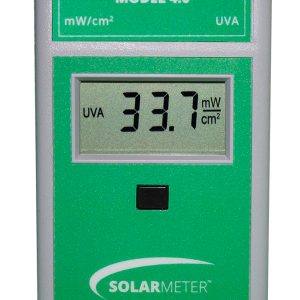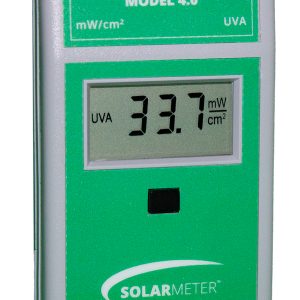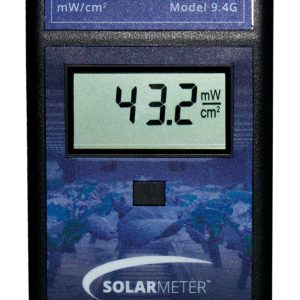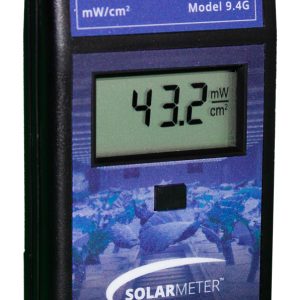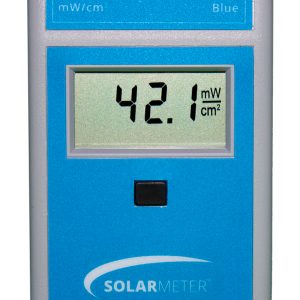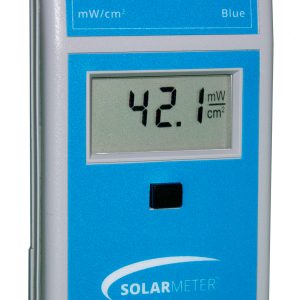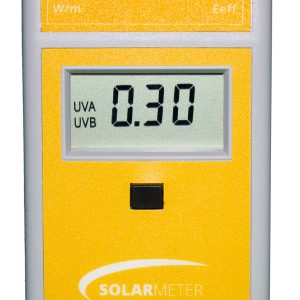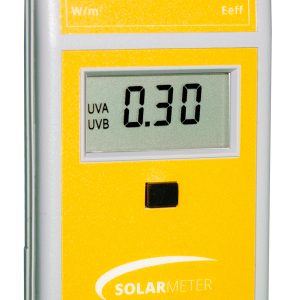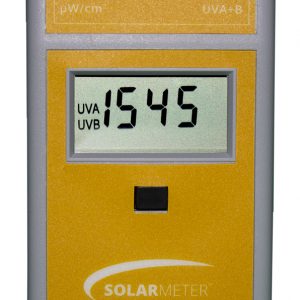Solarmeter® Model 6.2 Sensitive UVB Meter
$249.00
Features:
- Compact, Handheld, and Durable
- Simple Single-Button Operation
- NIST Traceable Accuracy
- LCD Display
- Made In USA
Applications:
- Monitoring UVB Lamp Intensity and Aging
- Testing Acrylic Shield Transmission
- Testing Eyewear UV Blocking Capabilities
- Measuring Outdoor Shady Area UVB
- Testing Window Film / Tin Transmission
- Choose Sensitive Model 6.2 For Indoor / Low Intensity Applications
- Choose Standard Model 6.0 For Outdoor / High Intensity Applications
- Choose Model 6.2R Reptile UVB Lamp Meter For Reptile UVB Lamp Applications
- Description
- Additional information
- Videos
- Downloads
Description
| Solarmeter® Specifications | |
| Model | 6.2 |
| Irradiation Range | 0-1999 µW/cm² UVB |
| Response | 250-320 nm |
| Resolution | 1 µW/cm² |
| Conversion Rate | 3.0 Readings/Sec |
| Display | 3.5 Digit LCD |
| Digit Size | 0.4 (in) / 10.2 (mm) high |
| Operational Temperature | 32°F to 90°F / 0°C to 37.8°C |
| Operational Humidity | 5% to 80% RH |
| Accuracy | ±10% REF.NIST |
| Dimensions |
4.2L x 2.4W x 0.9D (in) / 106.7L x 61W x 22.9D (mm) |
| Weight | 4.5 (oz) / 128 (g) Including Battery |
| Power Source | 9-Volt DC Battery |
| Lens | UV Glass |
| Diffuser | Teflon |
| Agency Approval | CE Mark |
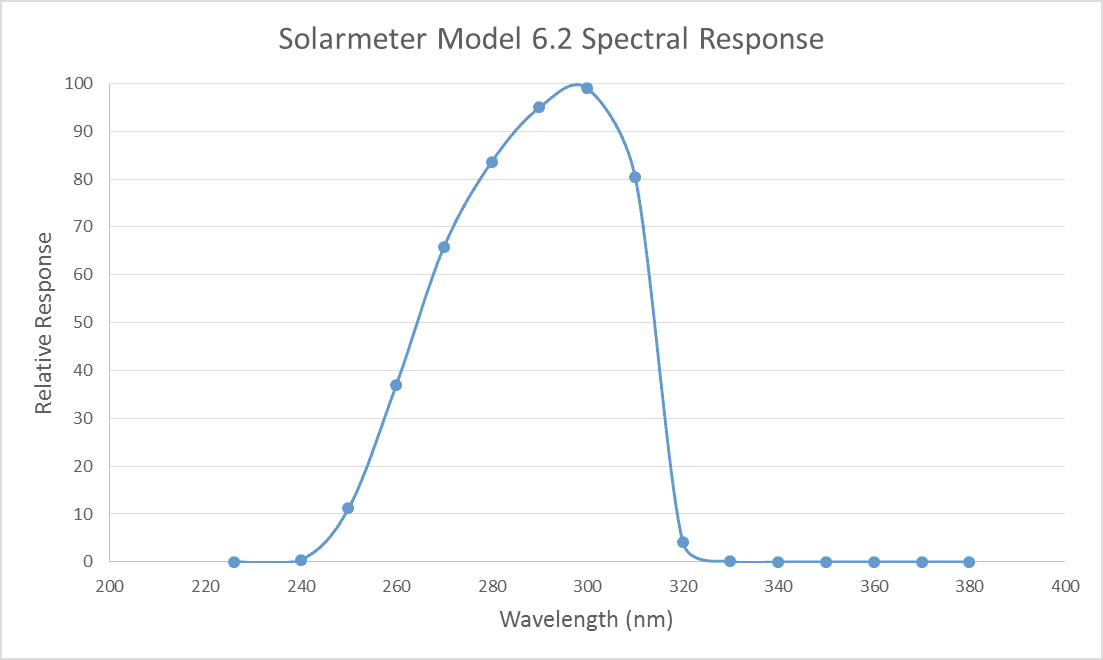
Sensor
Silicon Carbide (SiC) Photodiode. Interference filter blocks most UVA from response as shown on the Spectral Sensitivity Graph.
Operation
To operate your Solarmeter, aim the sensor window located on the top panel of the meter directly at a UV source. Press and hold the push-button switch on the face of the meter. For best results take note of the distance the reading was taken from the UV source in order to ensure repeatable results. Battery operation voltage is viable from 9V down to 6.5V. Below 6.5V, the numbers on the LCD display will begin to dim, indicating the need for battery replacement. Under typical service load, a standard 9V battery will last around 2 years.
Proper Usage of Solarmeter® Ultraviolet Radiometer for Lamp Aging Tests
- Wear eye protection when checking UV lamps (UV-block wrap around glasses).
- Allow lamps to warm-up prior to taking readings (at least 15 min).
- When checking aging of lamps, keep measuring distance and locations constant.
- Lamps should be replaced when output drops to about 50% of their original (new) readings. Take overall reading at exposure distance, or check individual lamps close to surface. Keep track of hours vs. readings on a chart.
- If unsure of what original new values were, replace lamp(s) with new ones of the same kind and compare to old ones.
- When checking UVT acrylic transmission, take reading through acrylic; then remove acrylic and hold meter sensor at approximately the same distance from lamp as the acrylic shield was located. If acrylic blocks much UVB it should be replaced.
- Do not subject the meter to extremes in temperature, humidity, shock or dust. If accidentally exposed to extreme humidity or damp conditions, abnormally high readings may occur. Allowing the meter to dry out naturally or by placing it in a bag with silica gel to restore normal functionality.
- Use a dry, soft cloth to clean the intrument. Keep sensor free of oil, dirt, etc.
For information on using the Model 6.2 with reptile lamps see http://www.uvguide.co.uk/index.htm
Additional information
| Weight | 0.5 lbs |
|---|---|
| Dimensions | 7 × 3.5 × 2.5 in |
| Sort order |

